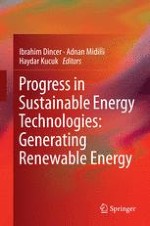2014 | OriginalPaper | Buchkapitel
25. Effects of Pyrolysis Conditions on Structural Ingredients and Functional Groups of Hybrid Poplar
verfasst von : Hanzade Haykiri-Acma, Serdar Yaman
Erschienen in: Progress in Sustainable Energy Technologies: Generating Renewable Energy
Aktivieren Sie unsere intelligente Suche, um passende Fachinhalte oder Patente zu finden.
Wählen Sie Textabschnitte aus um mit Künstlicher Intelligenz passenden Patente zu finden. powered by
Markieren Sie Textabschnitte, um KI-gestützt weitere passende Inhalte zu finden. powered by
